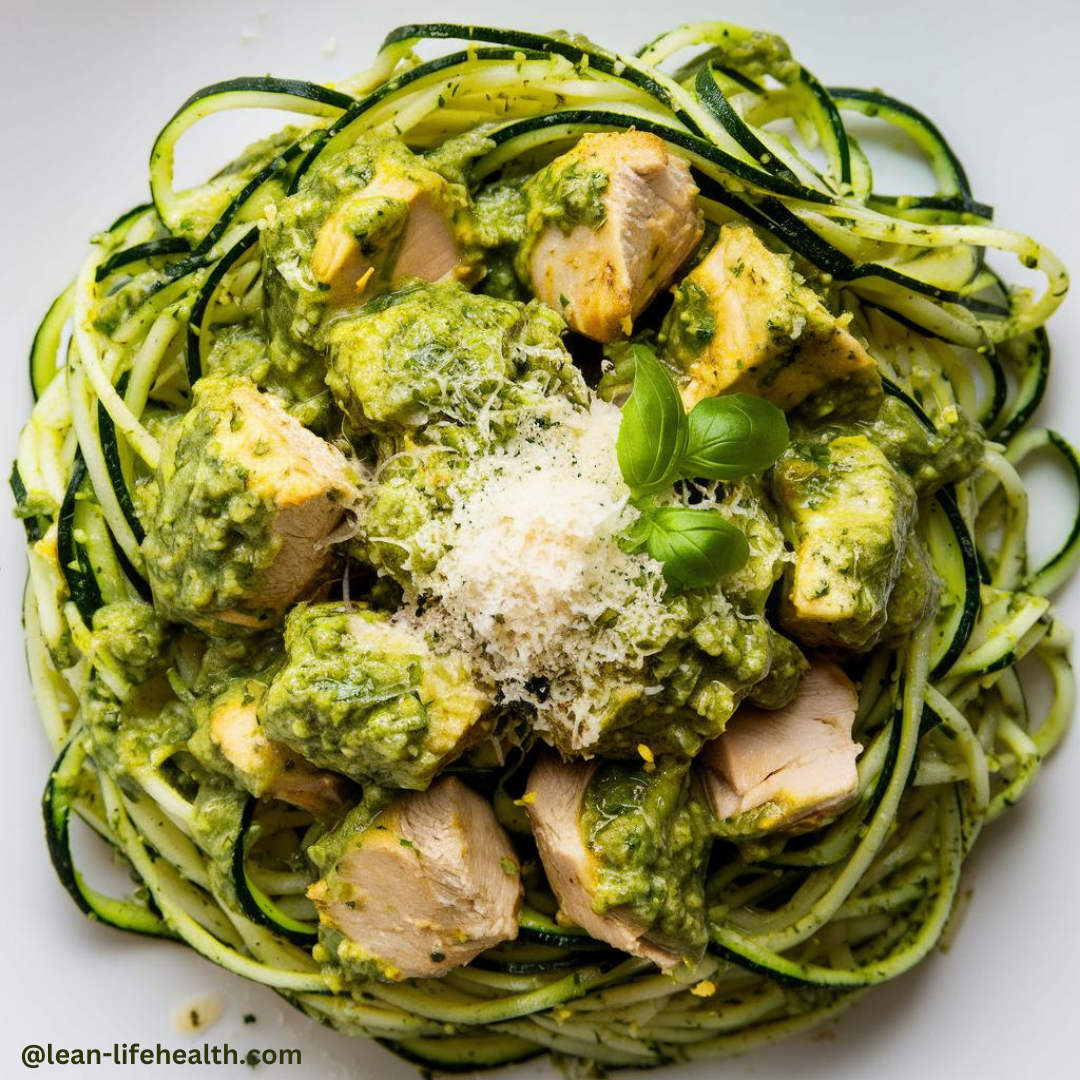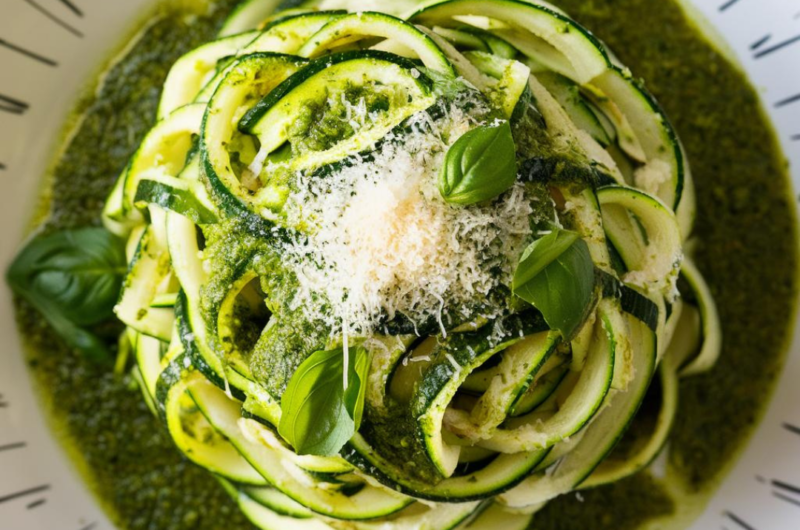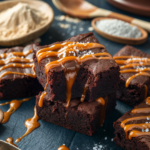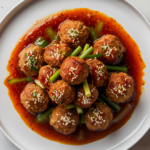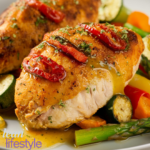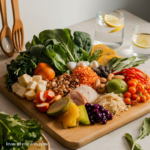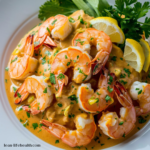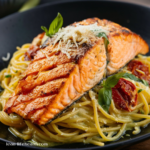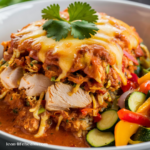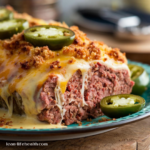Introduction
Are you looking for a delicious, healthy, and easy-to-make dish that satisfies your pasta cravings without the guilt? Look no further than Zucchini Noodles & Pesto! This vibrant and flavorful meal combines the lightness of zucchini noodles with the rich, aromatic taste of pesto, creating a dish that’s perfect for any occasion. Whether you’re aiming to cut down low-carb, increase your vegetable intake, or simply try something new, zucchini noodles with pesto are a fantastic choice.
Health Benefits of Zucchini Noodles
Zucchini noodles, affectionately known as “zoodles,” are a wonderful pasta substitute. They’re incredibly low in calories, making them a great option for those looking to manage their weight. Zucchini is also packed with essential vitamins and minerals, including Vitamin C, Vitamin A, potassium, and antioxidants. Additionally, zucchini noodles are naturally gluten-free and low in carbs, making them suitable for various dietary needs, including keto and paleo diets.
The Magic of Pesto
Pesto, originating from the Liguria region of Italy, is a versatile and nutritious sauce. Traditional pesto is made from fresh basil, garlic, pine nuts, Parmesan cheese, and olive oil. This combination not only tastes divine but also offers numerous health benefits. Basil is rich in antioxidants and has anti-inflammatory properties. Olive oil provides healthy fats, while pine nuts and Parmesan add protein and essential nutrients. Variations of pesto can include different nuts, herbs, or even greens like spinach or kale, allowing for endless creativity.
How to Make Zucchini Noodles & Pesto
Choosing the Right Zucchini: Select firm, medium-sized zucchinis with vibrant green skin. Avoid zucchinis that are overly large, as they tend to be watery and less flavorful.
Tools Needed:
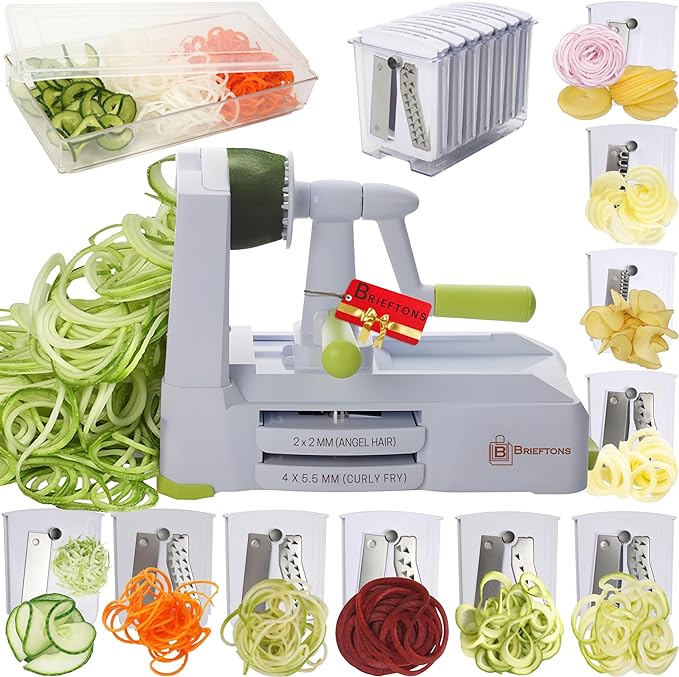
Spiralizer
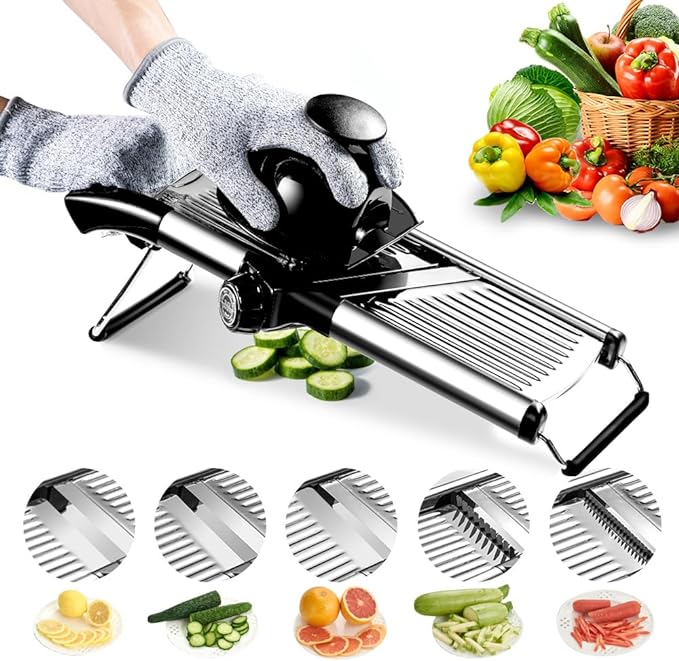
Mandoliner

Julienne peeler
Zucchini Noodles with Pesto recipe
Difficulty: Easy4
servings30
minutes40
minutes430
kcalThis recipe is a lighter version that skips the chicken and focuses on the fresh flavors.
Ingredients
4 medium zucchinis
1 tablespoon olive oil
Salt and pepper to taste
For the Homemade Pesto:
2 cups fresh basil leaves
2 cloves garlic
1/4 cup pine nuts
1/2 cup grated Parmesan cheese
1/2 cup extra-virgin olive oil
Salt and pepper to taste
Optional Add-ins and Variations:
Cherry tomatoes
Grilled chicken
Shrimp
Sliced almonds
Sun-dried tomatoes
Directions
- Wash the Zucchinis– Place the zucchinis under cool running water and gently scrub them with your hands or a soft vegetable brush to remove any dirt or pesticides. Pat them dry with a clean towel.
- Trim the Ends of Each Zucchini– Place the zucchinis on a cutting board. Using a sharp knife, cut off the stem and blossom ends to remove any tough parts, ensuring uniform and tender pieces.
- Create Zucchini Noodles with Your Chosen Tool– Using your preferred tool, such as a spiralizer, julienne peeler, or mandoliner slicer, transform the zucchinis into noodle shapes. Secure the zucchini and carefully create the noodles, ensuring consistent thickness for an even texture.
- Remove Excess Moisture – zucchini noodles on a layer of paper towels or a clean kitchen towel. Pat them gently to absorb excess moisture. You can also lightly sprinkle them with salt to draw out water and let them sit for 10-15 minutes before patting dry again.
- Serve or Cook the Noodles
Raw or Cooked: Zucchini noodles can be enjoyed raw or lightly cooked. If you prefer them cooked, proceed to the next step.
Sauté Lightly: Heat a large skillet over medium heat. Add a drizzle of olive oil and toss the zucchini noodles in the skillet for 2-3 minutes until just tender. Avoid overcooking to prevent them from becoming mushy. - Season and Enjoy
Season: Add your favorite seasonings, sauces, or toppings. Zucchini noodles pair well with marinara sauce, pesto, garlic, and herbs.
Serve: Plate the noodles and enjoy them as a light, healthy alternative to traditional pasta.
Recipe Video
Preparing the Pesto Sauce
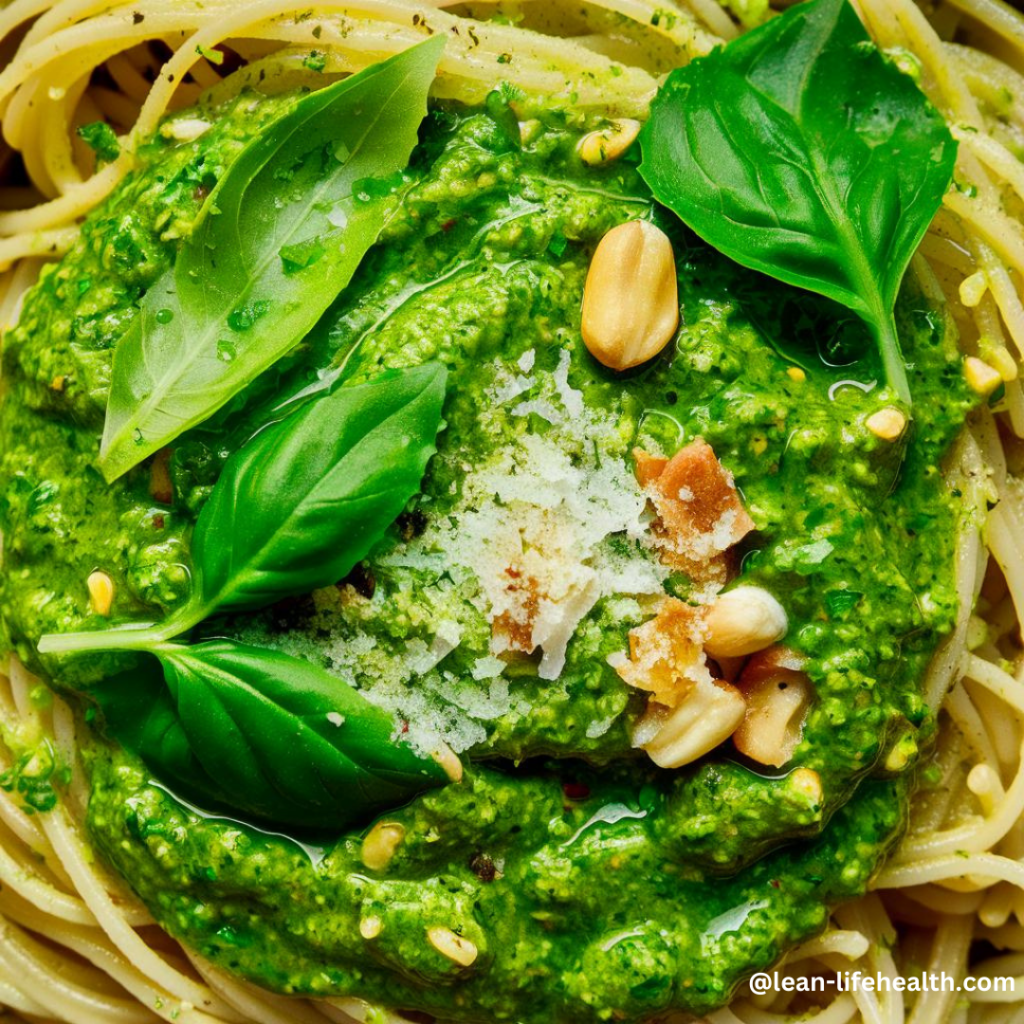
Traditional Pesto Recipe:
- In a food processor, combine basil, garlic, and pine nuts. Pulse until finely chopped.
- Add Parmesan cheese and pulse again.
- With the processor running, slowly drizzle in olive oil until the mixture is smooth.
- Season with salt and pepper to taste.
Alternative Pesto Variations:
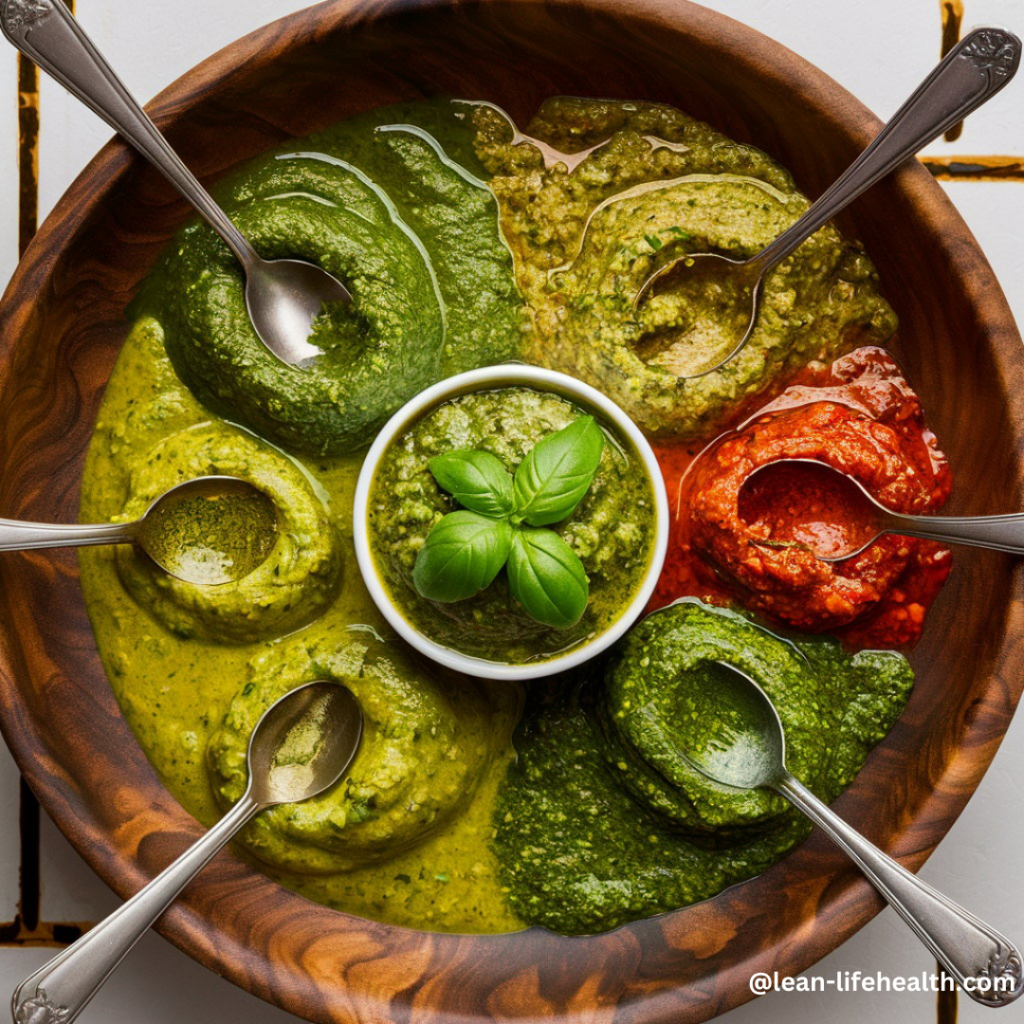
Classic Basil Pesto
- Ingredients:
- Fresh basil leaves
- Garlic cloves
- Pine nuts
- Parmesan cheese
- Extra-virgin olive oil
- Salt and pepper to taste
- Preparation:
- Blend fresh basil leaves, garlic, pine nuts, and Parmesan cheese with extra-virgin olive oil until smooth. Season with salt and pepper to taste. This classic pesto is perfect for pasta, sandwiches, and as a dip.
Spinach and Walnut Pesto
- Ingredients:
- Fresh spinach leaves
- Walnuts
- Garlic cloves
- Parmesan cheese
- Extra-virgin olive oil
- Lemon juice
- Salt and pepper to taste
- Preparation:
- Blend fresh spinach leaves, walnuts, garlic, Parmesan cheese, and a splash of lemon juice with extra-virgin olive oil until smooth. Season with salt and pepper. This variation is great for adding a nutrient boost to your meals.
Sun-Dried Tomato Pesto
- Ingredients:
- Sun-dried tomatoes (in oil)
- Fresh basil leaves
- Garlic cloves
- Almonds
- Parmesan cheese
- Extra-virgin olive oil
- Salt and pepper to taste
- Preparation:
- Blend sun-dried tomatoes, fresh basil leaves, garlic, almonds, and Parmesan cheese with extra-virgin olive oil until smooth. Season with salt and pepper. This rich, tangy pesto is perfect for spreading on sandwiches or adding to pasta dishes.
Arugula and Pistachio Pesto
- Ingredients:
- Fresh arugula leaves
- Pistachios
- Garlic cloves
- Parmesan cheese
- Extra-virgin olive oil
- Lemon zest and juice
- Salt and pepper to taste
- Preparation:
- Blend fresh arugula leaves, pistachios, garlic, Parmesan cheese, and lemon zest and juice with extra-virgin olive oil until smooth. Season with salt and pepper. This peppery, nutty pesto is excellent for salads and grilled vegetables.
Cilantro and Cashew Pesto
Ingredients:
- Fresh cilantro leaves
- Cashews
- Garlic cloves
- Lime juice
- Extra-virgin olive oil
- Salt and pepper to taste
Preparation:
- Blend fresh cilantro leaves, cashews, garlic, and lime juice with extra-virgin olive oil until smooth. Season with salt and pepper. This bright, flavorful pesto is a fantastic addition to tacos, seafood, and rice dishes.
Kale and Pumpkin Seed Pesto
Ingredients:
- Fresh kale leaves (stems removed)
- Pumpkin seeds
- Garlic cloves
- Nutritional yeast (for a cheesy flavor)
- Extra-virgin olive oil
- Lemon juice
- Salt and pepper to taste
Preparation:
- Blend fresh kale leaves, pumpkin seeds, garlic, nutritional yeast, and lemon juice with extra-virgin olive oil until smooth. Season with salt and pepper. This hearty, vegan pesto is perfect for pasta, grain bowls, and roasted vegetables.
Tips for Perfecting Pesto:
- Use fresh, high-quality ingredients.
- Adjust the consistency with more or less olive oil.
- Taste and tweak seasoning as needed.
Combining Zucchini Noodles and Pesto
Mixing Techniques:
- In a large bowl, gently toss the zucchini noodles with the pesto until well-coated.
- For a warm dish, sauté the noodles in a skillet with olive oil for 2-3 minutes before adding pesto.
Serving Suggestions:
- Top with cherry tomatoes, pine nuts, or extra Parmesan.
- Serve immediately for the best texture and flavor.
Cooking Tips for Zucchini Noodles
Cooking vs. Raw:
- Raw: Maintains crunch and nutrients.
- Cooked: Softens the noodles and brings out a different flavor profile.
Avoiding Soggy Noodles:
- Pat noodles dry before cooking.
- Cook briefly over medium-high heat.
Flavor Enhancement Tips:
- Add garlic or onion powder for extra zest.
- Sprinkle with red pepper flakes for a spicy kick.
Zucchini Noodles with Pesto Variations
Adding Proteins:
- Chicken: Grilled or Sautéed Chicken Breast Slices-Grilled or sautéed chicken breast slices are a versatile and protein-rich option that can be incorporated into a variety of dishes. Grilling chicken breasts imparts a delicious smoky flavor and a slightly charred texture, while sautéing keeps the meat tender and juicy. Chicken breast is a lean protein source, making it an excellent choice for those looking to maintain a healthy diet. Whether added to salads, pasta, or served with vegetables, grilled or sautéed chicken breast slices are a nutritious and satisfying choice.
- Shrimp: Sautéed or Grilled Shrimp-Sautéed or grilled shrimp are a delightful and quick-to-prepare protein option that can enhance any meal. Sautéing shrimp in a pan with garlic, butter, and a splash of lemon juice brings out their natural sweetness and succulent texture. Grilling shrimp adds a wonderful smoky flavor and can be done in minutes, making it ideal for busy weeknights or outdoor gatherings. Shrimp are low in calories and high in protein, making them a healthy addition to your diet. Enjoy sautéed or grilled shrimp in salads, tacos, pasta, or as a standalone entrée.
- Tofu: Marinated and Pan-Fried Tofu Cubes-Marinated and pan-fried tofu cubes are a fantastic plant-based protein option that can be flavored to suit any cuisine. Tofu absorbs marinades exceptionally well, allowing you to infuse it with a variety of flavors, from soy sauce and ginger to lemon and herbs. Pan-frying tofu gives it a crispy exterior while keeping the inside soft and tender. Tofu is a versatile ingredient that can be used in stir-fries, salads, bowls, or even as a meat substitute in sandwiches. It’s a great source of protein for vegetarians and vegans, and its versatility makes it a staple in many kitchens.
Incorporating Other Vegetables:
- Bell peppers
- Mushrooms
- Spinach
Experimenting with Different Pesto’s:
- Sun-Dried Tomato Pesto: Blend sun-dried tomatoes with basil, garlic, and olive oil.
- Spinach Pesto: Replace half the basil with fresh spinach leaves.
Serving Suggestions
Ideal Pairings:
- Light salads with lemon vinaigrette
- Crusty whole-grain bread
- A crisp white wine like Sauvignon Blanc
Presentation Tips:
- Use a large, shallow bowl for serving.
- Garnish with fresh basil leaves and a sprinkle of Parmesan.
Making it a Meal Prep Option:
- Store noodles and pesto separately.
- Combine just before serving for optimal texture.
Storing and Reheating
Best Practices for Storing Zucchini Noodles:
- Keep in an airtight container in the refrigerator for up to 3 days.
- Store pesto in a separate container with a layer of olive oil on top.
Reheating Tips:
- Reheat noodles briefly in a skillet to avoid sogginess.
- Pesto can be used cold or gently warmed.
Shelf Life of Homemade Pesto:
- Typically lasts up to a week in the refrigerator.
- Can be frozen in ice cube trays for longer storage.
Nutritional Information
Caloric Breakdown:
- Each serving of zucchini noodles with pesto provides approximately 150 calories. This makes it a light and healthy meal option, perfect for those watching their calorie intake while still enjoying a flavorful and satisfying dish. The zucchini noodles, often referred to as “zoodles,” offer a low-carb alternative to traditional pasta, while the pesto sauce, made from fresh basil, garlic, olive oil, and nuts, adds a rich, savory taste without adding too many extra calories. Whether you’re following a specific diet or just looking for a nutritious meal, this dish is a great choice.
Macronutrient Content:
- High in healthy fats from olive oil and pine nuts.
- Moderate protein from Parmesan and optional add-ins.
- Low in carbs and calories.
Benefits of Each Ingredient:
- Zucchini: A Nutrient Powerhouse-Zucchini is a fantastic addition to any diet, packed with essential nutrients that support overall health. This versatile vegetable is high in dietary fiber, which aids in digestion and promotes a feeling of fullness, helping with weight management. Zucchini is also rich in vitamins, particularly vitamin C and vitamin A. Vitamin C acts as an antioxidant, protecting your cells from damage and boosting your immune system. Vitamin A is crucial for maintaining healthy vision and skin. Including zucchini in your meals can provide a substantial nutritional boost, supporting your body’s needs in multiple ways.
- Basil: A Natural Antioxidant Source-Basil, a fragrant herb commonly used in various cuisines, is more than just a flavorful addition to dishes. It is rich in antioxidants, compounds that help protect your cells from oxidative stress and reduce inflammation. These antioxidants, such as flavonoids and polyphenols, play a significant role in maintaining your overall health by neutralizing harmful free radicals. Basil also contains essential oils that have anti-bacterial properties, contributing to its health benefits. By incorporating basil into your diet, you can enjoy its delightful flavor while reaping the benefits of its powerful antioxidants.
- Garlic: Immune System Support-Garlic is renowned for its distinctive flavor and numerous health benefits, particularly its ability to support immune health. It contains compounds like allicin, which have been shown to enhance the immune system’s function. Garlic’s immune-boosting properties help your body fight off infections and illnesses more effectively. Additionally, garlic has anti-inflammatory and antibacterial properties, making it a valuable addition to a health-conscious diet. Regular consumption of garlic can contribute to better overall health by supporting your body’s natural defenses.
- Pine Nuts: Nutrient-Dense and Satisfying-Pine nuts are a nutrient-dense food that provides a healthy source of fats and protein. These small, buttery nuts are rich in monounsaturated fats, which are heart-healthy and can help reduce bad cholesterol levels. They also contain a good amount of protein, making them a satisfying snack that can help with muscle repair and growth. Pine nuts are also packed with vitamins and minerals, including vitamin E, magnesium, and zinc, which are essential for various bodily functions. Incorporating pine nuts into your diet can provide a delicious and nutritious boost, contributing to overall well-being.
FAQ
Can I use store-bought pesto? Absolutely! While homemade pesto is fresher and can be tailored to your taste, store-bought pesto is a convenient and tasty option.
How do I keep zucchini noodles from getting watery? Pat the noodles dry after spiralizing and cook them briefly over medium-high heat. Avoid adding salt until just before serving, as it draws out moisture.
What other dishes can I make with zucchini noodles? Zucchini noodles can be used in stir-fries, soups, or even as a cold salad base with various dressings and toppings.
Is there a low-fat version of pesto? Yes, you can reduce the olive oil and use more fresh herbs and lemon juice to create a lighter pesto.
Can zucchini noodles be frozen? Zucchini noodles can be frozen, but they may become mushy upon thawing. It’s best to enjoy them fresh or store them in the refrigerator for up to 3 days.
Conclusion
Zucchini noodles with pesto is a delicious and healthy dish that’s incredibly versatile. Whether you’re trying to eat more vegetables, cut down on carbs, or just enjoy a fresh and flavorful meal, this recipe is perfect for you. With a few simple ingredients and easy preparation, you can create a dish that’s both satisfying and nutritious. Give it a try and make it your own by experimenting with different variations and add-ins. Enjoy your culinary journey with zucchini noodles and pesto, and don’t forget to share your creations with friends and family!

